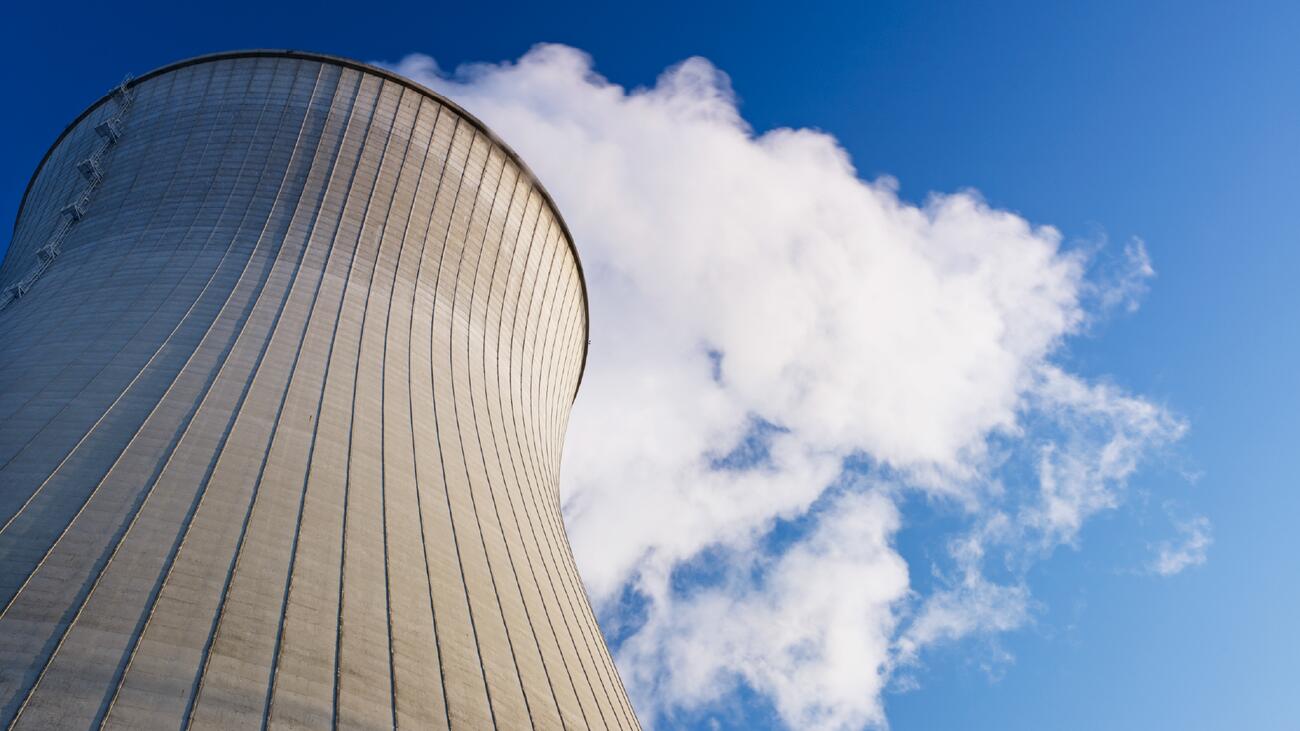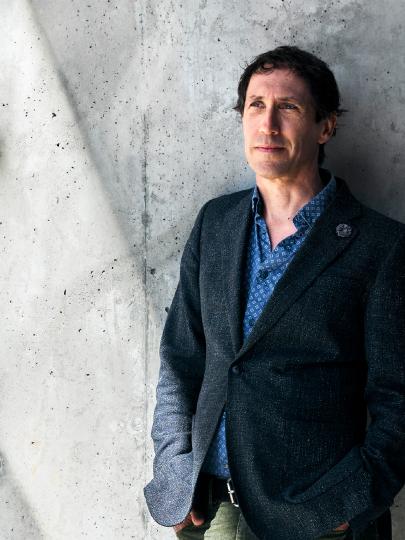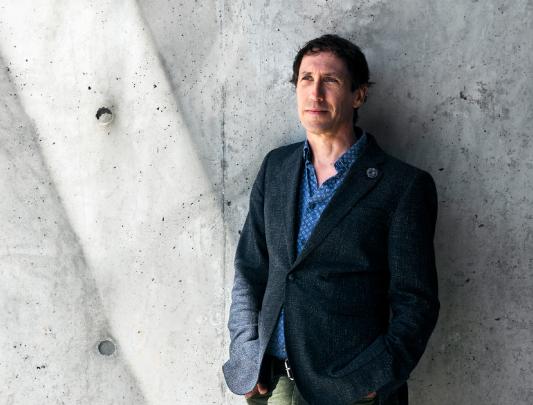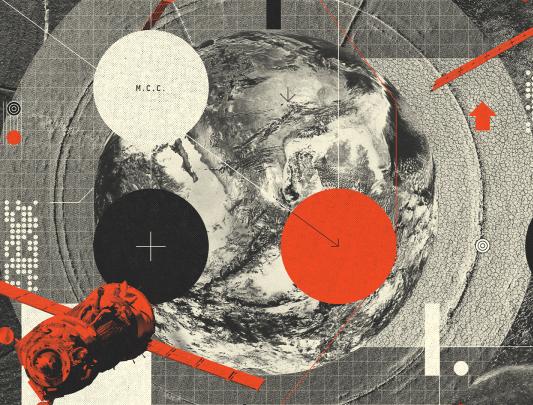
Photo: Micha Pawlitzki / Corbis Documentary via Getty Images
Opinion
Why nuclear energy is not the solution to the climate crisis
Despite about 20 countries declaring plans to triple nuclear energy by 2050 and the backing of billionaires like Bill Gates, we should not support expanding nuclear power.
That’s according to a new book, Nuclear is Not the Solution: The Folly of Atomic Power in the Age of Climate Change, by professor M.V. Ramana, who is the Simons Chair in Global Disarmament and Human Security at UBC’s School of Public Policy and Global Affairs.
In this Q&A, Ramana shares key insights from the book on why nuclear power does not help mitigate climate change. ~ Sachi Wickramasinghe, BA’11, MJ’14, and Erik Rolfsen, BA’92.
What motivated you to write this book?
Just 20 or 30 years ago, talking about nuclear energy as an environmentally friendly source of electricity would probably get you laughed out of the room. But in the last decade, advocates of nuclear energy – from energy companies to governments and tech billionaires – have advertised the technology as a clean source of electricity that is vital to solving climate change.
Their arguments make no sense given what we know about the history and the technical characteristics of nuclear energy, so one motivation for this book is to lay out those arguments yet again, because they seem to have been forgotten.
How do you respond to claims that nuclear energy’s low carbon footprint makes it necessary for meeting our carbon reduction goals?
Many technologies have low carbon footprints but we need to consider two other important factors: cost and deployment time – and nuclear power fails on both metrics.
Nuclear energy is one of the most expensive ways to generate electricity. Investing in cheaper low‑carbon sources of energy will provide more emission reductions per dollar.
Second, it takes about a decade to build a nuclear plant. If you add the time needed for all the necessary preparatory steps – obtaining environmental and safety clearances, getting consent from a community that has to live near a hazardous facility for decades, and raising the huge amounts of funding necessary – you’re looking at 15 to 20 years. This timeline is incompatible with the urgent demands of climate science.
Does the development of Small Modular Reactors (SMRs) address these issues?
Small modular reactors are designed to generate lower amounts of power, which means less revenue for the owner. But the cost of construction is not proportionately smaller. Therefore, electricity from SMRs will be more expensive than power from large nuclear plants, and these large plants are themselves not competitive with renewables.
What risks associated with nuclear energy are most overlooked by its proponents?
First, nuclear reactors – whether large or small – are susceptible to catastrophic releases of energy and radioactivity; we’ve seen that happen with Fukushima and Chernobyl. It’s impossible to guarantee severe accidents won’t happen again.
Second, all activities linked to the nuclear fuel chain – from mining uranium to dealing with the radioactive wastes produced – have significant health and environmental impacts. Some radioactive materials remain hazardous for hundreds of thousands of years. There is no demonstrated solution to managing these wastes.
Third, the technology to generate nuclear power is closely tied to the one to make nuclear weapons. Expanding nuclear energy will increase the potential for nuclear weapons proliferation.
Proponents downplay all these risks as problems of the past. But as I explain in my book, they will afflict new nuclear reactors too.
Meanwhile, many countries are investing in new reactors, and in March the world’s first Nuclear Energy Summit was held in Brussels. How do you explain this “nuclear renaissance”?
The term “nuclear renaissance” was actually bandied about in the first decade of this century, especially after the Bush administration’s 2005 Energy Policy Act offered numerous incentives to promote nuclear power in the United States. US electricity companies proposed building more than 30 reactors, many of them expected to start operating by 2021. In the end, only four of these reactors proceeded to actual construction, of which two, in the state of South Carolina, were abandoned after $9 billion had already been spent because of massive cost increases and time delays. Efforts in other countries, like Canada, France, and the United Kingdom, that went under the label nuclear renaissance also fizzled out.
The nuclear industry has a huge problem in that it is not expanding. Most of the world’s power plants were constructed before the 1980s, and the share of the world’s electricity produced from them has been declining consistently since the mid‑1990s. The main reason for this trend is that nuclear plants are very expensive. The nuclear industry is desperate for public money so it can stay in business.
As a result, it periodically mounts media and political campaigns to gain the support of citizens and governments. This is the context for what happened in Brussels.
What renewable energy sources are most promising, and how can we accelerate their adoption?
Solar energy has become the cheapest power source in the past decade, with solar and wind now leading new‑electricity generation. These renewables are not a panacea – they are not without their own environmental footprint – but they seem to be the best option.
One challenge with solar and wind energy is that their outputs depend on the sun shining and the wind blowing. However, over the last couple of decades we have learned a lot about how to manage grids with high proportions of renewable sources. To balance their variable output, we must invest in a mix of renewable energy technologies across various regions, finding ways to shape electricity demand to more closely match supply, and in battery and other storage technologies to store excess energy. There is a lot of innovation in this area, and it’s where governments should be investing.
Addressing climate change isn’t just about technology. The climate crisis is a symptom of a deeper problem. Our economic system relies on unending growth with continuously increasing material and energy resource use. But we live on a finite planet. If we are to confront climate change, as well as the multiple cascading ecological crises that are also related to our economic system, we should start making social and political changes. Nuclear power is incompatible with the kind of social and political transformations needed to address climate change.






























